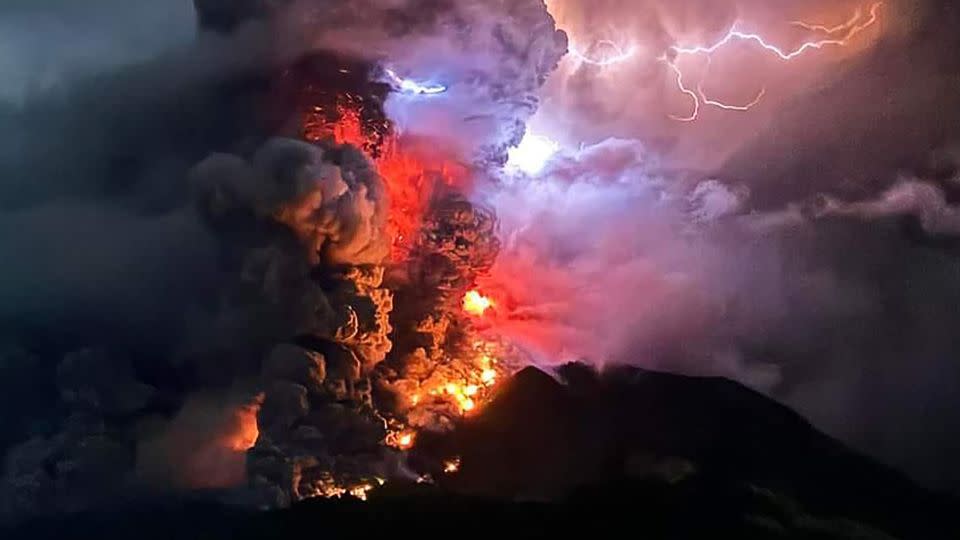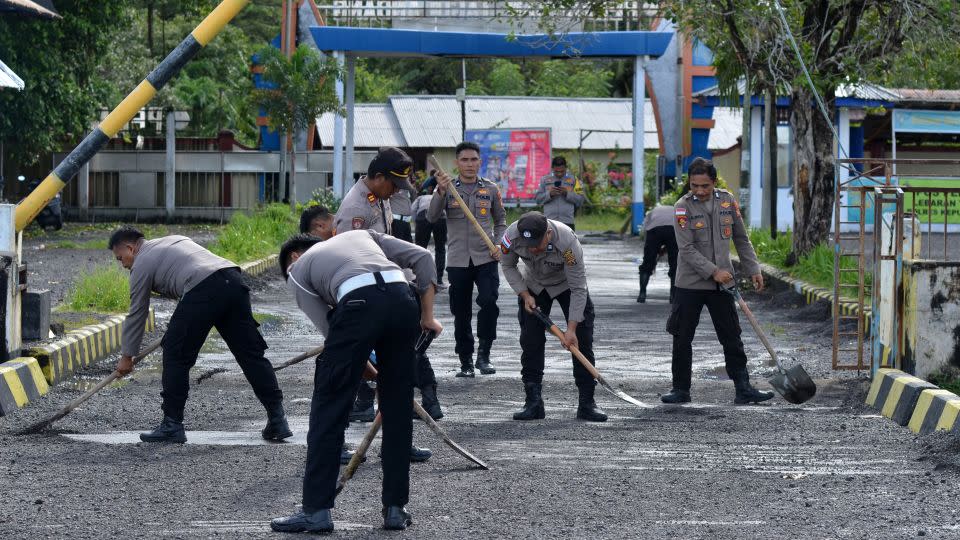A powerful volcano is erupting. Here’s what it could mean for the weather and climate

When Indonesia’s Mount Ruang suffered multiple explosive eruptions last week, volcanic gases were projected so high that they reached the second layer of the atmosphere, tens of thousands of feet above the ground.
The force of Mount Ruang’s eruptions this week ejected a plume of ash tens of thousands of feet into the air and sent volcanic gases more than 65,000 feet into the air, according to satellite estimates — about 25,000 feet higher higher than what a commercial plane usually flies.
The potential impacts of the eruption on weather and climate are beginning to be felt, although the danger posed by the volcano persists and evacuations continue.
It is possible that volcanoes could have a short-term impact on the climate – including a cooling of global temperatures – due to the gases they inject into the upper atmosphere. But Mount Ruang’s influence on the climate will likely be minimal, according to Greg Huey, chair of Georgia Tech’s School of Earth and Atmospheric Sciences.
And daily weather conditions near Mount Ruang — like temperature, clouds and rain — likely won’t be influenced by the volcano for a long time, Huey told CNN.
Mount Ruang, a 725-meter-high stratovolcano on Ruang Island in Indonesia’s North Sulawesi province, has erupted at least seven times since Tuesday evening, the country’s volcanology agency said. According to volcanologists, stratovolcanoes can produce explosive eruptions because their conical shape allows gas to accumulate.
Volcanic ash is typically a mixture of ground solids — including rocks, minerals and glass — and gases, such as water vapor, carbon dioxide and sulfur dioxide, according to NASA.
“The ash itself is short-lived in the atmosphere because it is heavy, large and tends to settle quickly,” Huey told CNN. These are the gases that can reach much higher in the atmosphere.
Dense ash near the surface creates hazardous air quality and causes a temporary cooling effect by blocking warming from the sun. Once the active eruption is over, ash begins to settle.

Some gases from Mount Ruang’s eruptions rose so high that they penetrated the stratosphere, the second layer of Earth’s atmosphere. It is located just above the troposphere, where all life and weather occurs.
The stratosphere is a very dry place, and typically only gases with long lifetimes – spanning decades – filter through, according to Huey. A volcanic eruption is essentially the only natural way for short-lived gases – less than a few years – like sulfur dioxide and water vapor to enter the stratosphere.
Once in the stratosphere, sulfur dioxide and water vapor combine to form sulfuric acid aerosols that create a layer of hazy droplets, according to UCAR. These droplets spread far from their point of entry and remain in the stratosphere for up to three years, reflecting sunlight back into space and causing global temperatures to cool.
But the cooling effect lasts longer if more gas enters the stratosphere.
In 1991, Mount Pinatubo – another stratovolcano – erupted in the Philippines and produced the largest cloud of sulfur dioxide ever measured. The eruption released more than 17 million tons of gas into the atmosphere and caused a global temperature drop of about 0.5 degrees Celsius (0.9 degrees Fahrenheit) that lasted about a year, according to the U.S. Geological Survey.
In comparison, satellite instruments estimated that Mount Ruang had released approximately 300,000 tonnes of sulfur dioxide so far, although it is not clear how much of this plume has reached the stratosphere. While that amount is pretty huge on its own, it’s far below the most extreme case, according to Huey.
An eruption as large as that of Mount Pinatubo in 1991 could certainly cool the planet for a few years, although it would not be able to erase Earth’s current climate problems caused by pollution caused by global warming, and this would come at the cost of enormous damage. to life and property.
CNN’s Kathleen Magramo contributed to this report.


For more CNN news and newsletters, create an account at CNN.com
yahoo





